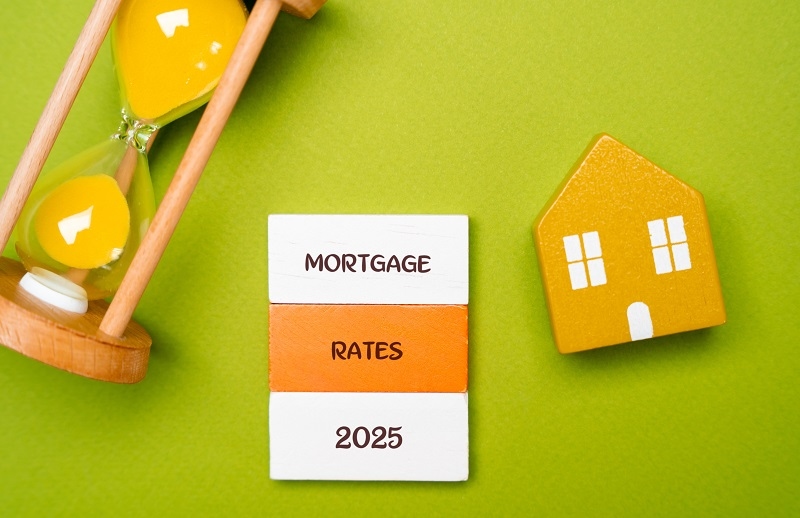
The US housing market is always affected by interest rates, particularly mortgage interest rates. In 2025, this relationship will also be tighter as the economy experiences post-pandemic normalization, inflation fears, and Federal Reserve policy. Knowing how the mortgage rate relates to house prices enables buyers, sellers, and investors to make better decisions.
This blog examines how mortgage rates in the real estate industry control the real estate scenario, following direction trends, geography movement, and affordability patterns. Let's discover more!
Housing Market Mortgage rates are the interest paid by lenders when an individual finances the purchase of a house. The rates depend on several variables that include:
Mortgage rates can either be fixed (the same throughout the duration of the loan) or variable (changing with the forces of the market).
One of the simplest explanations for how the mortgage rates effect home prices is the buyer's buying power. When interest rates are low, people can borrow more with the same payment amount. Increased affordability stimulates demand and pushes home prices up.
Conversely, when mortgage rates in the housing market rise, it is more expensive to borrow. The buyer can afford less, and generally, this brings home prices down, particularly in overpriced markets.
Example:
Mortgage rates have fluctuated everywhere in recent decades:
Today, in 2025, the real estate market is attempting to find a balance between small rate cuts and risk-averse consumer sentiments.
The most appropriate question for today is: Do people still afford houses?
The housing affordability trends USA are contradictory:
Fewer purchasers are additionally emerging from small cities or southern states where property is less expensive and interest rates on housing market mortgages go further.
Here is a look at a real estate market analysis in 2025 to see what is happening:
The Federal Reserve has indicated that the interest rate increase will slow down in 2025. This has maintained 30-year mortgage rates at 6–6.5%. While this is not as low as it was in 2020, it is more stable.
The hyper-home appreciation of 2021–2022 has decreased. In most markets, the price appreciation is under the inflation rate or even in negative territory for some cities.
More people are listing homes for sale as they acclimate to the "new normal" of rising mortgage rates. That's smoothing out supply shortages in the pandemic era.
Builders are slowly adding supply. With fewer bidding wars, they're trying to capture affordability and first-time buyers with smaller houses and townhouses.
These numbers indicate that the housing market is not collapsing — it's rebalancing.
Housing market regional trends reveal a broad spectrum of conditions:
Where you buy in 2025 will be as important as when.

Among the most obvious indications of how the housing market responds are homebuyer demand interest rates.
This ebb and flow is crucial for both buyers and sellers to watch.
In 2025, Sellers must be smarter than ever. With fewer-than-usual buyers who can pay top-dollar for a house, overly priced listings sit on the market longer.
Some of the most crucial tactics are:
Many sellers have also been carrying low-rate mortgages for the past years, taking fewer homes off the market in some markets.
If you’re a homebuyer today, you’re navigating a tricky environment. Tips for smart buying include:
Also, think long-term. A slightly higher rate today doesn’t mean you’re locked in forever—many experts believe refinancing opportunities will improve by 2026.
As purchasing gets more expensive with rate hikes, increasingly people are turning to renting. That drives rents up, particularly in urban centers where housing is scarce.
But rental markets are also adjusting:
This trend also stems from U.S. housing affordability patterns, where renting is the sole temporary solution for many families.
The Federal Reserve does not specifically determine mortgage rates, but its policy impacts them significantly.
In 2025:
Though every individual shock rate increase remains capable of surprising the housing market, as it does now, the Fed is concerned with balance.
There are still some large questions:
The response to these questions will define real estate market analysis in 2025 and beyond.
Housing values and house mortgage rates for the housing market are closely related and continue to be so. As 2025 unfolds, the market is gradually evolving towards a new universe of rates. House prices are settling down, buyers are becoming conservative, and local variations are increasingly divergent.
Knowing how mortgage interest affects house prices, observing the way home affordability patterns in the USA are currently moving, and the way home regional market trends are working will assist everyone in making wiser choices on today's property market.
This content was created by AI